
DP-300: Administering Microsoft Azure SQL Solutions
PDFs and exam guides are not so efficient, right? Prepare for your Microsoft examination with our training course. The DP-300 course contains a complete batch of videos that will provide you with profound and thorough knowledge related to Microsoft certification exam. Pass the Microsoft DP-300 test with flying colors.

Curriculum for DP-300 Certification Video Course
| Name of Video | Time |
|---|---|
 1. Getting a free trial of Microsoft Azure |
6:00 |
 2. Creating Azure SQL Database with sample data |
11:00 |
 3. Installing SSMS, connecting to Azure SQL Database, and quick look around SSMS |
11:00 |
 4. Review 6 principal clauses of the SELECT statement |
6:00 |
 5. Review JOINs |
4:00 |
| Name of Video | Time |
|---|---|
 1. 69. validate data types defined for columns |
9:00 |
 2. 66. identify data quality issues with duplication of data |
6:00 |
 3. 67. identify normal form of database tables - Normal Forms 1 to 3 |
9:00 |
 4. 67. identify normal form of database tables - Normal Forms 4 to 5 |
7:00 |
 5. 58. determine the appropriate type of execution plan |
6:00 |
 6. Different types of loops used in execution plans, and Scan and Seek |
6:00 |
 7. 59. identify problem areas in execution plans |
7:00 |
| Name of Video | Time |
|---|---|
 1. 63, 68. identify and implement index changes for queries |
11:00 |
 2. 61. DMVs which gather query performance information |
6:00 |
 3. 61, 62. determine the appropriate DMVs to gather performance information |
8:00 |
 4. 64. recommend query construct modifications based on resource usage |
9:00 |
 5. 65. assess the use of hints for query performance |
8:00 |
| Name of Video | Time |
|---|---|
 1. 1. deploy database offerings on selected platforms |
4:00 |
 2. 2, 80. configure customized deployment templates |
8:00 |
 3. 4, 5. evaluate requirements and functional benefits/impact for the deployment |
8:00 |
 4. 6, 8. evaluate scalability and security aspects |
5:00 |
 5. 7. HA/DR of the possible database offerings |
8:00 |
| Name of Video | Time |
|---|---|
 1. 9. configure Azure SQL Database for scale and performance |
5:00 |
 2. 9, 53, 56. vCore-based purchasing model |
9:00 |
 3. 9, 53, 56. DTU-based purchasing model, Server vs Serverless |
7:00 |
 4. 9, 53, 56. Serverless/provisioned and elastic pools |
6:00 |
 5. 9, 53, 56. Other Azure SQL Database configuration settings |
4:00 |
 6. 12. calculate resource requirements, including Elastic pool requirements |
4:00 |
 7. 13, 71. evaluate database partitioning techniques, such as database sharding |
11:00 |
 8. 72. evaluate the use of compression for tables and indexes |
13:00 |
 9. 14. set up SQL Data Sync |
12:00 |
| Name of Video | Time |
|---|---|
 1. 15, 16. evaluate requirements and strategies for the migration |
7:00 |
 2. 19, 20. Azure Migrate |
3:00 |
 3. 19, 20. SQL Server Migration Assistant (SSMA) |
5:00 |
 4. 19, 20. Data Migration Assistant (DMA) |
7:00 |
 5. 19, 20. Azure Database Migration Service (DMS) |
7:00 |
| Name of Video | Time |
|---|---|
 1. 23. configure Azure AD authentication |
8:00 |
 2. 24. create users from Azure AD identities |
8:00 |
 3. 25, 113. configure security principals - roles |
9:00 |
 4. 25, 113. configure security principals - GRANT/REVOKE/DENY |
4:00 |
 5. 25, 113. configure security principals - individual permissions |
5:00 |
 6. 25, 113. configure security principals - the ALL permission |
4:00 |
 7. 114. configure permissions by using custom roles |
5:00 |
 8. 27. apply principle of least privilege for all securables |
3:00 |
| Name of Video | Time |
|---|---|
 1. 28. implement Transparent Data Encryption (TDE) |
4:00 |
 2. 29, 33. implement object-level encryption and Always Encrypted |
10:00 |
 3. 29, 33. More about Always Encrypted |
9:00 |
 4. Always Encrypted versus Transparent Data Encryption |
2:00 |
 5. 30. implement Dynamic Data Masking |
8:00 |
 6. 32. configure server and database-level firewall rules |
8:00 |
| Name of Video | Time |
|---|---|
 1. 34. apply a data classification strategy |
6:00 |
 2. 35. configure server and database audits |
9:00 |
 3. 36. implement data change tracking - Change Tracking |
10:00 |
 4. 36. implement data change tracking - Change Data Capture |
7:00 |
 5. 37. perform a vulnerability assessment |
5:00 |
| Name of Video | Time |
|---|---|
 1. 38. prepare an operational performance baseline - Metrics Explorer |
5:00 |
 2. 38. prepare an operational performance baseline - Other ways |
5:00 |
 3. 77. create event notifications for Azure resources |
9:00 |
 4. 39. determine sources for performance metrics |
5:00 |
 5. 40. interpret performance metrics |
6:00 |
 6. 41. assess database performance by using Intelligent Insights |
4:00 |
 7. 42. configure and monitor activity and performance |
5:00 |
| Name of Video | Time |
|---|---|
 1. 43, 50. implement index maintenance tasks |
8:00 |
 2. 44. implement statistics maintenance tasks |
3:00 |
 3. 45, 82. configure database auto-tuning and automate performance tuning |
5:00 |
 4. 47. manage storage capacity |
5:00 |
 5. 50, 105. assess growth/fragmentation and report on database free space |
5:00 |
| Name of Video | Time |
|---|---|
 1. 48, 60. Query Store - an introduction |
6:00 |
 2. 48, 60. configure Query Store to collect performance data, extract query plans |
9:00 |
 3. 49. identify sessions that cause blocking |
5:00 |
 4. Isolation Levels |
6:00 |
 5. 51. assess performance-related database configuration parameters |
6:00 |
 6. 57. configure Intelligent Query Processing (IQP) |
10:00 |
| Name of Video | Time |
|---|---|
 1. 46. What is Elastic Job Agent? |
6:00 |
 2. 46. automate database maintenance tasks |
11:00 |
 3. Full, differential and transaction log backups |
5:00 |
 4. 89, 92. perform a database restore to a point in time - test DR |
6:00 |
 5. 93. configure long-term backup retention |
4:00 |
| Name of Video | Time |
|---|---|
 1. 84. recommend HADR strategy based on RPO/RTO requirements |
7:00 |
 2. 86, 87. evaluate Azure-specific HADR solutions |
6:00 |
 3. 94. configure replication - Active Geo-replication |
11:00 |
 4. 88, 89, 96. configure auto-failover groups and test HA by using failover |
8:00 |
| Name of Video | Time |
|---|---|
 1. 101. evaluate database health using DMVs - overall resource usage |
5:00 |
 2. 101. evaluate database health using DMVs - other topics |
5:00 |
 3. 102. evaluate server health using DMVs |
3:00 |
 4. 103. perform database consistency checks by using DBCC |
8:00 |
 5. 106. review database configuration options |
4:00 |
| Name of Video | Time |
|---|---|
 1. 4-8. Evaluating MIs and VMs based on specific requirements |
6:00 |
 2. 10, 53, 56. configure Azure SQL Managed Instance for scale and performance |
5:00 |
 3. More about Azure SQL Managed Instance |
5:00 |
 4. Accessing Azure SQL Managed Instance in SSMS |
6:00 |
 5. 11, 53, 56. configure SQL Server in Azure VMs for scale and performance - Part 1 |
7:00 |
 6. 11, 53, 56. configure SQL Server in Azure VMs for scale and performance - Part 2 |
5:00 |
 7. Logging into SQL Server on Azure Virtual Machines |
7:00 |
 8. 52. Adding additional disks to the Azure Virtual Machine |
8:00 |
| Name of Video | Time |
|---|---|
 1. 17, 18. evaluate requirements and strategies for the upgrade |
5:00 |
 2. 21, 22. implement an online and offline upgrade strategy |
7:00 |
 3. 24, 112. create users from Azure AD identities (MIs and VMs) |
7:00 |
 4. 111. manage certificates using T-SQL |
4:00 |
 5. 26, 113. configure database and object-level permissions using graphical tools |
3:00 |
 6. 25, 112, 114. configure security principals (MIs and VMs) |
7:00 |
 7. 70, 104. recommend table and index storage including filegroups (MI and VMs) |
11:00 |
| Name of Video | Time |
|---|---|
 1. 76, 79. create event notifications based on metrics |
4:00 |
 2. 75. configure notifications for task success/failure/non-completion |
5:00 |
 3. 46, 73. manage schedules and automate maintenance jobs |
8:00 |
 4. 78. create alerts for server configuration changes |
4:00 |
 5. 77. split and filter event notifications for Azure resources |
3:00 |
| Name of Video | Time |
|---|---|
 1. 39. determine sources for performance metrics |
6:00 |
 2. 43. implement index maintenance tasks (Database Engine Tuning Advisor) |
4:00 |
 3. 42. Monitor activity using SQL Profile, Extended Events, Performance Dashboard |
8:00 |
 4. 54. configure Resource Governor for performance (VM/MI) |
8:00 |
| Name of Video | Time |
|---|---|
 1. 3, 82. apply patches and updates for hybrid and IaaS deployment |
5:00 |
 2. 31. implement Azure Key Vault and disk encryption for Azure VMs |
4:00 |
 3. 74. configure multi-server automation |
4:00 |
 4. 83. implement policies by using automated evaluation modes |
8:00 |
| Name of Video | Time |
|---|---|
 1. 81. automate backups |
4:00 |
 2. 90. perform a database backup with options |
7:00 |
 3. 108, 110. database (and transaction log) backups with options in T-SQL code |
7:00 |
 4. 91, 92. perform a database restore with options |
12:00 |
 5. 109. perform restore of user databases in T-SQL |
3:00 |
| Name of Video | Time |
|---|---|
 1. 94. configure replication - Transactional replication |
9:00 |
 2. 85, 86, 87. evaluate HADR for hybrid and Azure-specific deployments |
8:00 |
 3. Creating Virtual Machines for Failover Cluster and Always On Availability Group |
5:00 |
 4. Connecting Virtual Machines to a Domain |
13:00 |
 5. 100. Configure failover cluster instances on Azure VMs |
5:00 |
 6. 107. Checking SQL Server Installation and preparing for AO |
6:00 |
 7. 98. configure quorum options for a Windows Server Failover Cluster |
8:00 |
 8. 95, 97. create an Availability Group |
6:00 |
 9. 89, 97. Failover and integrate a database into an Always On Availability Group |
4:00 |
 10. 99. configure an Always On Availability Group listener |
2:00 |
Microsoft Azure Database DP-300 Exam Dumps, Practice Test Questions
100% Latest & Updated Microsoft Azure Database DP-300 Practice Test Questions, Exam Dumps & Verified Answers!
30 Days Free Updates, Instant Download!
DP-300 Premium Bundle

- Premium File: 430 Questions & Answers. Last update: Dec 22, 2025
- Training Course: 130 Video Lectures
- Study Guide: 672 Pages
- Latest Questions
- 100% Accurate Answers
- Fast Exam Updates
Microsoft DP-300 Training Course
Want verified and proven knowledge for Administering Microsoft Azure SQL Solutions? Believe it's easy when you have ExamSnap's Administering Microsoft Azure SQL Solutions certification video training course by your side which along with our Microsoft DP-300 Exam Dumps & Practice Test questions provide a complete solution to pass your exam Read More.
Ultimate Microsoft DP-300 Course for Database Administration and Azure SQL Management
Gain comprehensive DBA skills for managing Azure SQL Databases, SQL Managed Instances, and SQL Server on Azure Virtual Machines while preparing for the DP-300 exam.
Course Overview
The Microsoft DP-300 course provides comprehensive training for professionals aiming to master the administration of relational databases in Azure environments. This course equips participants with the knowledge and practical skills necessary to efficiently manage SQL Server and Azure SQL databases. Through hands-on exercises and real-world scenarios, learners gain a thorough understanding of cloud database solutions, data security, and performance tuning. Whether you are an experienced database administrator or an IT professional looking to expand your expertise in cloud-based database management, this course lays the foundation for effectively handling complex database environments and prepares you for the Microsoft DP-300 certification.
Throughout the course, participants will explore how relational databases operate, how to deploy and configure SQL Server instances in Azure, and how to implement strategies for monitoring and optimizing performance. Emphasis is placed on data security, backup and recovery procedures, and ensuring compliance with regulatory standards. By the end of this training, learners will be able to manage relational databases in a cloud environment with confidence, applying industry best practices to ensure reliability, scalability, and security.
What You Will Learn From This Course
How to understand the architecture and principles of relational databases and their role in enterprise applications.
Practical skills for deploying and configuring SQL Server and Azure SQL instances to meet business requirements.
Techniques for implementing robust data security measures, including authentication, authorization, and encryption.
Strategies for performing performance tuning, query optimization, and monitoring database health.
Methods for creating automated backup and disaster recovery plans to ensure data integrity and availability.
Best practices for scaling cloud database solutions and managing large volumes of data efficiently.
Insights into compliance and auditing procedures to align database operations with industry standards.
Preparation for Microsoft DP-300 certification by understanding real-world use cases and problem-solving scenarios.
Learning Objectives
By completing this course, participants will be able to:
Demonstrate a clear understanding of relational database concepts and how they apply to Azure SQL and SQL Server environments.
Deploy, configure, and manage SQL Server instances in Azure, including storage, networking, and high-availability options.
Implement effective data security measures, protecting sensitive information through authentication, authorization, and encryption techniques.
Monitor database performance and apply performance tuning strategies to optimize query execution and resource utilization.
Design and implement backup, recovery, and disaster recovery solutions to maintain database integrity and minimize downtime.
Apply best practices for database maintenance, patching, and updates in cloud environments.
Navigate compliance requirements and audit database operations to ensure adherence to regulatory standards.
Develop practical skills that align with the Microsoft DP-300 certification objectives and prepare for professional roles in database administration and cloud database solutions management.
Requirements
To make the most of this course, participants should have:
A fundamental understanding of database concepts and relational data structures.
Basic knowledge of SQL queries and familiarity with SQL Server or similar relational database management systems.
Some experience with cloud computing concepts and infrastructure, although this is not mandatory.
General IT knowledge, including networking, operating systems, and security principles.
A willingness to engage in hands-on exercises and practical scenarios for real-world learning.
Having these foundational skills ensures that participants can effectively follow the course content and immediately apply their knowledge to managing relational databases in Azure environments.
Course Description
The Microsoft DP-300 training course is designed to provide participants with the skills and knowledge required to administer relational databases in Azure and on-premises environments. The course emphasizes practical learning and covers all essential aspects of database administration, from deployment and configuration to performance optimization and data security. Participants will explore advanced features of Azure SQL, including high availability, scalability, and cloud database solutions management.
The course begins with an introduction to relational databases, their architecture, and their significance in enterprise applications. Learners will then progress to hands-on exercises involving SQL Server deployment in Azure, configuring databases, and setting up high-availability options. Advanced topics include monitoring performance, performance tuning, indexing strategies, and query optimization techniques. Additionally, the course addresses security and compliance, focusing on protecting sensitive data, implementing encryption, and ensuring adherence to industry standards.
Real-world scenarios and case studies are integrated throughout the training, providing participants with the opportunity to apply concepts in practical situations. This approach not only enhances understanding but also prepares learners to face challenges in professional database administration roles. By the end of the course, participants will have gained the expertise needed to efficiently manage SQL Server and Azure SQL databases, optimize performance, and ensure data security in cloud and on-premises environments.
Target Audience
This course is ideal for:
Database administrators seeking to enhance their skills in cloud-based environments and advance their career in database management.
IT professionals and engineers responsible for managing SQL Server and Azure SQL instances in enterprise settings.
Cloud architects and solutions designers who require an understanding of relational database administration in Azure.
Professionals preparing for the Microsoft DP-300 certification exam.
Anyone involved in managing cloud database solutions, performance tuning, and data security for relational databases.
The course is designed to meet the needs of both experienced database administrators and those with foundational knowledge who wish to expand their expertise in cloud-based database management.
Prerequisites
Before enrolling in this course, participants should have:
A basic understanding of relational database concepts, including tables, relationships, primary keys, and foreign keys.
Familiarity with SQL queries and fundamental database operations such as SELECT, INSERT, UPDATE, and DELETE.
Awareness of basic networking concepts, operating systems, and IT security principles.
Experience with cloud computing concepts is advantageous but not strictly required.
A readiness to engage in hands-on exercises, including configuring SQL Server instances, implementing security measures, and performing performance tuning.
Meeting these prerequisites ensures that participants can effectively engage with the course material, follow along with demonstrations, and complete practical exercises that simulate real-world database administration tasks.
Understanding Relational Databases
Relational databases are the foundation of most modern enterprise applications. They store structured data in tables that are related to one another through keys and indexes. Understanding the architecture and principles of relational databases is critical for anyone aiming to manage SQL Server or Azure SQL instances effectively.
This course explores relational database design, including normalization, relationships between tables, and strategies for ensuring data integrity. Participants will learn how to model data for scalability, performance, and ease of management. By understanding the fundamentals of relational databases, learners can more effectively deploy, configure, and maintain SQL Server and Azure SQL environments.
Azure SQL and Cloud Database Solutions
Cloud-based database solutions have become increasingly essential for organizations seeking scalability, flexibility, and cost-efficiency. Azure SQL provides a robust platform for managing relational databases in the cloud.
Participants will explore the features and capabilities of Azure SQL, including managed instances, elastic pools, and high-availability options. The course emphasizes the advantages of cloud database solutions, such as simplified maintenance, automatic updates, and integrated security features. Learners will gain hands-on experience configuring Azure SQL instances and implementing best practices for cloud database management.
Deploying SQL Server in Azure
Deployment is a critical step in administering relational databases. This course provides detailed guidance on deploying SQL Server instances in Azure, including configuring storage, networking, and security settings. Participants will learn how to provision databases, configure schemas, and set up high-availability options to ensure business continuity.
Hands-on exercises guide learners through creating SQL Server instances, configuring firewall rules, and establishing connectivity. This practical approach ensures that participants can apply deployment concepts in real-world scenarios, supporting both on-premises and cloud environments.
Implementing Data Security
Data security is a central aspect of relational database administration. Participants will explore strategies for protecting sensitive information, including authentication, authorization, and encryption techniques. The course covers role-based access control, auditing, and monitoring to detect and respond to potential security threats.
Emphasis is placed on compliance with regulatory standards and best practices for safeguarding data in cloud environments. Learners gain the skills necessary to implement secure database solutions that protect organizational assets while supporting operational efficiency.
Performance Monitoring and Tuning
Optimizing database performance is a critical responsibility for administrators. The course teaches participants how to monitor SQL Server and Azure SQL databases using built-in tools and techniques. Learners will explore performance tuning strategies, indexing, query optimization, and resource allocation to ensure databases operate efficiently under various workloads.
Practical exercises include analyzing query performance, identifying bottlenecks, and implementing solutions to improve response times and throughput. By mastering performance tuning, participants can ensure that database environments meet organizational demands and provide a seamless experience for end-users.
Backup, Recovery, and Disaster Planning
Ensuring data integrity and availability requires effective backup and recovery strategies. Participants will learn how to implement automated backup plans, restore databases, and prepare for disaster recovery scenarios. The course emphasizes planning for high availability and minimizing downtime, critical for mission-critical applications.
Hands-on activities guide learners through configuring backup schedules, performing restores, and testing disaster recovery procedures. This practical knowledge equips participants to maintain resilient database environments capable of withstanding failures and ensuring business continuity.
Managing Cloud Database Environments
Cloud database management involves unique challenges and opportunities. The course covers strategies for scaling Azure SQL instances, managing large volumes of data, and leveraging advanced cloud features such as elastic pools and managed instances. Participants will learn to balance performance, cost, and resource allocation to achieve optimal outcomes.
The training emphasizes real-world scenarios, including multi-tenant deployments, high-concurrency workloads, and hybrid cloud solutions. By understanding the nuances of cloud database management, participants can confidently design and maintain environments that meet organizational requirements.
Preparing for Microsoft DP-300 Certification
The course aligns with the objectives of the Microsoft DP-300 certification, providing learners with the knowledge and skills required to succeed in the exam. Participants will gain hands-on experience in administering relational databases, optimizing performance, securing data, and managing cloud database solutions.
Exam-focused exercises and scenarios help learners reinforce their understanding of core concepts and prepare for practical challenges. Successfully completing this course equips participants with a strong foundation for professional growth in database administration and cloud solutions management.
Course Modules/Sections
The Microsoft DP-300 training course is organized into carefully structured modules to ensure a comprehensive understanding of deploying and configuring SQL Server in Azure environments. Each module is designed to build upon the previous one, gradually enhancing the learner’s proficiency in managing cloud database solutions. The initial module focuses on the fundamentals of SQL Server deployment, including installing instances, configuring storage, and establishing connectivity. Following this, learners explore network configuration, firewall rules, and access management, ensuring databases are securely integrated within enterprise networks. Subsequent modules delve into advanced features such as high availability, disaster recovery, and performance optimization, providing a holistic view of database administration. Each section incorporates real-world exercises, guiding learners through practical scenarios that simulate professional responsibilities. By structuring the course in progressive modules, participants can develop both theoretical knowledge and practical skills essential for managing relational databases in Azure and hybrid environments.
The course also includes specialized sections on Azure SQL managed instances, elastic pools, and cloud scaling strategies, allowing participants to understand the nuances of cloud database solutions. By the end of the training, learners have experienced the full lifecycle of database administration, from deployment and configuration to ongoing management, monitoring, and optimization. This modular approach ensures that learners gain mastery over all aspects of SQL Server and Azure SQL administration while preparing for the Microsoft DP-300 certification exam.
Key Topics Covered
The course comprehensively addresses all critical aspects of deploying and configuring SQL Server and Azure SQL. Participants begin by understanding the architecture of relational databases and the specific considerations for cloud-based environments. Core topics include installation and setup of SQL Server instances, database provisioning, and schema creation. Learners explore storage configuration, including file groups, disk management, and optimal allocation strategies for high-performance operations. Networking and security are also covered, with detailed guidance on configuring firewalls, virtual networks, and user authentication.
Advanced topics include implementing high availability solutions such as Always On availability groups, failover clustering, and geo-replication for cloud instances. Participants learn how to configure backup and recovery strategies, automate maintenance tasks, and monitor system performance. Performance tuning is addressed in depth, including indexing, query optimization, and resource management. The course also explores advanced cloud database solutions, such as elastic pools, managed instances, and scaling strategies to accommodate varying workloads. Real-world case studies are integrated throughout, highlighting common challenges and best practices for deploying and managing databases in Azure environments. By the end of the course, learners will have mastered the skills necessary to efficiently deploy, configure, and maintain relational databases, ensuring reliability, security, and optimal performance.
Teaching Methodology
The teaching methodology of this course emphasizes a balanced combination of theoretical knowledge and hands-on practical experience. Each concept is introduced with clear explanations and real-world examples to ensure learners understand the underlying principles. Following theoretical instruction, participants engage in guided exercises that simulate professional database administration scenarios, allowing them to apply what they have learned immediately. This approach reinforces learning and ensures that participants can confidently perform tasks in real-world environments.
In addition to guided exercises, the course incorporates interactive discussions, case studies, and problem-solving activities that encourage critical thinking and collaboration. Learners are encouraged to explore different deployment and configuration strategies, analyze performance issues, and propose solutions based on best practices. The methodology also includes periodic assessments and knowledge checks to reinforce learning and identify areas for further improvement. By combining lectures, demonstrations, and hands-on practice, the course ensures that participants acquire both the conceptual understanding and practical skills required for effective SQL Server and Azure SQL administration.
Assessment & Evaluation
Assessment and evaluation in this course are designed to measure both theoretical knowledge and practical competency in managing SQL Server and Azure SQL environments. Participants are assessed through a combination of quizzes, hands-on exercises, and scenario-based evaluations. Quizzes focus on key concepts, ensuring that learners understand database architecture, deployment procedures, security measures, and performance optimization strategies. Hands-on exercises test practical skills, requiring participants to deploy, configure, and manage SQL Server instances, implement backup and recovery plans, and optimize database performance.
Scenario-based evaluations simulate real-world challenges, requiring learners to apply problem-solving skills and make informed decisions regarding deployment, configuration, and monitoring. These assessments ensure that participants can handle complex tasks and respond effectively to operational issues. Feedback is provided throughout the course, highlighting strengths and areas for improvement, enabling learners to refine their skills continuously. By combining multiple forms of assessment, the course ensures a comprehensive evaluation of each participant’s knowledge and practical abilities, preparing them for professional roles in database administration and cloud database management, as well as the Microsoft DP-300 certification exam.
Deploying SQL Server Instances in Azure
Deploying SQL Server in Azure is a foundational skill for database administrators. This section of the course guides participants through the process of provisioning SQL Server instances, configuring storage, and establishing connectivity. Learners explore the differences between on-premises deployments and cloud-based instances, including considerations for scalability, redundancy, and security. Practical exercises include creating virtual machines, installing SQL Server, and configuring database settings to align with organizational requirements.
Participants also learn to configure firewalls, virtual networks, and security groups to ensure secure access to databases. The course emphasizes best practices for deployment, including selecting appropriate hardware resources, configuring storage options, and optimizing network performance. By mastering deployment procedures, learners gain confidence in establishing SQL Server environments that are secure, scalable, and aligned with business needs.
Configuring Storage and Networking
Effective storage and networking configuration are essential for high-performance database operations. Participants learn how to configure storage accounts, manage disk allocation, and optimize file group placement to enhance performance. The course also covers strategies for scaling storage as database demands increase, including using Azure managed disks and optimizing I/O performance.
Networking configuration focuses on securing database access while ensuring reliable connectivity. Participants explore virtual networks, subnets, and firewall configurations, learning how to restrict access to authorized users and applications. Network monitoring tools are introduced to track latency, throughput, and connectivity issues, enabling proactive troubleshooting. By understanding both storage and networking considerations, learners can design and maintain SQL Server environments that are efficient, secure, and resilient.
Database Provisioning and Schema Design
Database provisioning and schema design are critical for ensuring data integrity and optimal performance. The course guides participants through creating databases, defining tables, relationships, and indexes, and implementing constraints to enforce data rules. Learners explore normalization techniques and best practices for schema design to reduce redundancy and improve query efficiency.
Advanced topics include partitioning large tables, implementing views and stored procedures, and designing schemas that support high-concurrency workloads. Practical exercises allow participants to create databases from scratch, apply configurations, and test performance under simulated workloads. By mastering provisioning and schema design, learners can ensure that relational databases are robust, maintainable, and optimized for enterprise applications.
High Availability and Disaster Recovery
Maintaining continuous database availability is a core responsibility of administrators. Participants learn to implement high availability solutions, including Always On availability groups, failover clustering, and geo-replication. The course explores strategies for minimizing downtime, ensuring data consistency, and maintaining business continuity in case of system failures.
Disaster recovery planning is also covered, with guidance on designing backup strategies, performing restores, and testing recovery procedures. Hands-on exercises simulate failure scenarios, allowing participants to practice implementing recovery plans and verifying system integrity. By mastering high availability and disaster recovery, learners ensure that databases remain operational and resilient in dynamic enterprise environments.
Performance Monitoring and Optimization
Monitoring and optimizing database performance is essential for maintaining efficient operations. Participants learn to use Azure monitoring tools, SQL Server Management Studio, and query analysis techniques to track performance metrics, identify bottlenecks, and optimize resource utilization. The course covers indexing strategies, query optimization, and best practices for database maintenance.
Practical exercises include analyzing query execution plans, adjusting indexes, and tuning system configurations to improve response times. Participants also explore strategies for managing workloads, balancing resources, and maintaining consistent performance under varying conditions. By mastering performance monitoring and optimization, learners ensure that SQL Server and Azure SQL databases operate at peak efficiency, supporting organizational goals and service-level agreements.
Security and Compliance Considerations
Data security and compliance are integral aspects of database administration. Participants explore strategies for protecting sensitive information, including authentication, authorization, encryption, and auditing. The course covers role-based access control, user permissions, and best practices for securing databases in cloud environments.
Compliance with regulatory standards is emphasized, including GDPR, HIPAA, and industry-specific requirements. Practical exercises involve implementing security policies, auditing database access, and monitoring for unauthorized activities. By integrating security and compliance into daily operations, learners ensure that databases remain protected while meeting organizational and regulatory obligations.
Managing Cloud Database Solutions
Managing cloud database solutions requires an understanding of scaling, resource allocation, and cost optimization. Participants learn to deploy managed instances, elastic pools, and other Azure SQL features to accommodate varying workloads. The course explores strategies for balancing performance, scalability, and cost-efficiency, allowing organizations to maximize the value of cloud database solutions.
Hands-on exercises simulate multi-tenant deployments, high-concurrency workloads, and dynamic scaling scenarios, giving participants practical experience in managing cloud databases. By mastering cloud database management, learners develop the skills necessary to maintain reliable, efficient, and cost-effective database environments in Azure.
Migration Strategies and Best Practices
Migrating existing on-premises databases to Azure requires careful planning and execution. The course covers migration strategies, including assessment, data transfer methods, and post-migration validation. Participants learn best practices for minimizing downtime, ensuring data integrity, and optimizing cloud performance after migration.
Practical exercises involve migrating sample databases, configuring cloud instances, and verifying performance and security. By understanding migration strategies and applying best practices, learners gain the confidence to manage complex database transitions and ensure seamless operations in cloud environments.
Benefits of the Course
Enrolling in the Microsoft DP-300 training course provides numerous benefits for database administrators, IT professionals, and cloud solutions specialists. One of the most significant advantages is the ability to gain a deep understanding of relational database administration in Azure and SQL Server environments. Participants develop practical skills that are immediately applicable in professional settings, enabling them to efficiently deploy, configure, and manage databases while ensuring security, high availability, and optimal performance.
The course also enhances problem-solving and critical-thinking skills. Through hands-on exercises and scenario-based learning, participants tackle real-world challenges, including performance bottlenecks, security breaches, and scaling requirements. This experiential approach ensures that learners are well-prepared to address complex issues in both on-premises and cloud database environments. Additionally, the course provides insight into best practices for cloud database solutions, helping organizations optimize resources, reduce operational costs, and improve system reliability.
Another benefit of this course is career advancement. Completing the training equips professionals with the knowledge and practical experience necessary to qualify for roles such as database administrator, cloud database engineer, and SQL Server specialist. Furthermore, the training aligns with Microsoft DP-300 certification objectives, offering participants a pathway to certification and enhancing their professional credibility in the industry. Overall, this course equips learners with the tools, knowledge, and confidence to excel in database administration and cloud-based solutions management.
Course Duration
The Microsoft DP-300 training course is designed to be comprehensive yet flexible, ensuring that participants gain mastery over all aspects of SQL Server and Azure SQL administration. The standard course duration is structured over multiple sessions, typically spanning 5 to 6 days of intensive instruction, though this can vary depending on the delivery format and learning pace. Each day consists of a combination of lectures, practical exercises, and interactive discussions, allowing learners to apply theoretical knowledge to real-world scenarios.
The modular structure ensures that participants gradually build proficiency, starting with foundational concepts and advancing toward more complex topics such as high availability, disaster recovery, and performance optimization. Participants can expect to spend significant time on hands-on exercises, working with virtual machines, deploying SQL Server instances, configuring cloud databases, and implementing security measures. These practical components are essential for reinforcing theoretical understanding and ensuring that learners can confidently manage database environments in professional settings.
Additionally, self-paced learning options are often available, allowing participants to review recorded sessions, complete exercises at their own pace, and revisit complex topics as needed. This flexibility ensures that professionals with varying schedules can successfully complete the course and acquire the skills necessary to excel in database administration and cloud database management.
Tools & Resources Required
To maximize the learning experience, participants should have access to specific tools and resources throughout the Microsoft DP-300 course. A reliable computer with internet connectivity is essential for accessing Azure portals, running virtual machines, and performing hands-on exercises. Participants will also need access to SQL Server Management Studio (SSMS) and Azure Data Studio, which provide the necessary interfaces for managing SQL Server and Azure SQL instances.
Familiarity with Microsoft Azure services is beneficial, as learners will deploy cloud database solutions, configure virtual networks, and manage storage resources. The course provides access to sample databases, scripts, and templates that facilitate hands-on practice, enabling participants to experiment with different configurations and test their skills in simulated real-world environments. Participants are also encouraged to have a basic understanding of PowerShell or Azure CLI, as these tools are often used for automating administrative tasks and managing cloud resources efficiently.
Supporting resources include comprehensive course materials, such as detailed manuals, step-by-step guides, and reference documentation. Interactive forums and discussion groups may also be available, allowing learners to collaborate, share insights, and seek guidance from instructors and peers. By utilizing these tools and resources, participants can fully engage with the course content, practice key skills, and build the confidence required to manage SQL Server and Azure SQL databases effectively.
Advanced Performance Tuning Techniques
Optimizing database performance is a critical responsibility for database administrators. The course emphasizes advanced performance tuning techniques to ensure that SQL Server and Azure SQL databases operate efficiently under various workloads. Participants learn how to analyze query performance, identify bottlenecks, and apply indexing strategies to improve query execution times.
Topics include evaluating execution plans, optimizing joins, and using partitioning to enhance data retrieval efficiency. Learners also explore resource allocation, including memory, CPU, and storage optimization, to balance performance across multiple workloads. By implementing these techniques, participants can prevent performance degradation, improve user experience, and maintain the reliability of database applications. Hands-on exercises simulate real-world performance challenges, allowing learners to practice tuning strategies and measure improvements in system responsiveness.
Monitoring and Maintenance Strategies
Effective monitoring and maintenance are essential for sustaining healthy database environments. The course teaches participants how to utilize Azure monitoring tools, SQL Server Performance Monitor, and custom dashboards to track key performance metrics, including query execution times, disk I/O, and system resource usage.
Routine maintenance tasks, such as updating statistics, rebuilding indexes, and managing database growth, are covered to ensure consistent performance and prevent issues before they affect operations. Participants also learn how to automate maintenance plans using SQL Server Agent and Azure automation tools, reducing manual intervention and minimizing downtime. By mastering monitoring and maintenance strategies, learners can proactively address performance issues, maintain data integrity, and ensure high availability in both cloud and on-premises environments.
Backup and Disaster Recovery Management
Backup and disaster recovery management is a core component of database administration. Participants explore strategies for implementing full, differential, and transaction log backups to protect data and ensure recoverability in case of failures. The course emphasizes automated backup processes, allowing administrators to maintain consistent backup schedules without manual oversight.
Disaster recovery planning includes configuring failover clusters, Always On availability groups, and geo-replication for Azure SQL databases. Participants engage in exercises that simulate hardware failures, network disruptions, and data corruption scenarios, applying recovery strategies to restore database functionality. By understanding and implementing robust backup and recovery processes, learners ensure business continuity, minimize downtime, and maintain organizational trust in data management practices.
Security Implementation and Management
Database security is a critical concern for organizations, particularly when managing cloud-based solutions. The course addresses a comprehensive range of security measures, including authentication methods, role-based access control, and encryption. Participants learn how to configure user permissions, monitor access logs, and implement policies that protect sensitive data from unauthorized access.
Advanced topics include auditing, compliance monitoring, and threat detection in SQL Server and Azure SQL environments. Learners gain hands-on experience configuring Transparent Data Encryption (TDE), Always Encrypted features, and dynamic data masking to safeguard information while maintaining operational efficiency. By mastering security implementation, participants ensure that relational databases comply with regulatory standards and industry best practices while reducing the risk of data breaches.
Managing Large-Scale Cloud Database Environments
Managing large-scale cloud database solutions requires specialized knowledge and skills. Participants explore strategies for scaling Azure SQL databases, optimizing resource allocation, and implementing elastic pools to manage fluctuating workloads efficiently. The course covers multi-tenant deployments, high-concurrency workloads, and hybrid cloud environments, highlighting best practices for maintaining performance and cost efficiency.
Learners engage in practical exercises that simulate enterprise-level scenarios, including managing multiple databases, monitoring resource utilization, and applying scaling strategies dynamically. By mastering these techniques, participants can ensure that cloud database environments remain resilient, high-performing, and adaptable to changing organizational demands.
Automation and Scripting for Database Administration
Automation is a key aspect of modern database administration, reducing manual effort and increasing efficiency. Participants learn to use PowerShell scripts, Azure CLI commands, and SQL Server Agent jobs to automate routine tasks such as backups, maintenance, and monitoring.
The course also covers scripting for deployment, configuration, and security management, allowing administrators to standardize processes and maintain consistency across multiple environments. Practical exercises provide learners with experience creating, testing, and deploying automation scripts in both SQL Server and Azure SQL environments. By integrating automation into daily operations, participants can streamline administrative tasks, minimize errors, and focus on strategic database management activities.
Troubleshooting and Problem Resolution
Effective troubleshooting is essential for maintaining reliable database operations. Participants learn systematic approaches to identifying and resolving performance, connectivity, and security issues in SQL Server and Azure SQL environments.
The course emphasizes diagnostic tools, log analysis, and monitoring techniques to pinpoint root causes and implement corrective actions. Learners engage in scenario-based exercises, addressing common challenges such as query slowdowns, deadlocks, resource contention, and unauthorized access attempts. By developing strong troubleshooting skills, participants can respond proactively to issues, maintain system stability, and ensure continuous database availability.
Real-World Case Studies and Application
Throughout the course, real-world case studies are integrated to provide context and practical insights. Participants analyze examples of enterprise database deployments, cloud migration projects, and performance optimization initiatives.
These case studies illustrate common challenges, effective strategies, and lessons learned from professional environments. By examining real-world scenarios, learners gain perspective on how theoretical concepts are applied in practice, enhancing their problem-solving abilities and preparing them for professional responsibilities in database administration and cloud database management.
Preparing for Microsoft DP-300 Certification
The course aligns closely with the objectives of the Microsoft DP-300 certification exam, offering participants a structured path to certification readiness. Learners engage in practice exercises, scenario-based challenges, and review sessions that reinforce critical concepts and ensure mastery of essential skills.
Topics such as database deployment, configuration, performance tuning, security, and cloud database management are emphasized to reflect the exam objectives. Participants gain confidence in applying knowledge to both exam scenarios and real-world database administration tasks, positioning themselves for professional growth and certification success.
Career Opportunities
Completing the Microsoft DP-300 course opens a wide range of career opportunities for database administrators, IT professionals, and cloud solutions specialists. Participants gain expertise in deploying, configuring, and managing SQL Server and Azure SQL databases, which are highly sought-after skills in today’s technology landscape. Database administrators can advance to senior roles within IT departments, taking responsibility for enterprise-level database management, cloud migration projects, and performance optimization initiatives.
Cloud architects and engineers benefit from the course by acquiring the knowledge necessary to design scalable, secure, and efficient database solutions in Azure environments. Professionals with experience in data security, backup, recovery, and high availability become valuable assets to organizations that require reliable and compliant database operations. Additionally, completion of this course positions participants for certification, enhancing their credibility and opening doors to roles such as cloud database administrator, SQL Server specialist, database consultant, and enterprise data manager.
By mastering relational database administration, performance tuning, and cloud database management, participants can pursue careers across industries, including finance, healthcare, technology, government, and education. The skills gained are transferable to both on-premises and cloud environments, providing flexibility and long-term career growth. As organizations increasingly adopt cloud solutions, professionals with DP-300 expertise are well-positioned to meet the demand for skilled administrators capable of managing complex and secure database systems efficiently.
Enroll Today
Enrolling in the Microsoft DP-300 course is the first step toward advancing your career in database administration and cloud database management. The course offers a structured, hands-on learning experience that equips participants with the knowledge and skills needed to deploy, configure, secure, and optimize SQL Server and Azure SQL databases effectively. By participating in this training, learners gain practical experience with real-world scenarios, preparing them for the challenges faced by professional database administrators.
The course also provides a pathway to Microsoft DP-300 certification, enhancing professional credibility and demonstrating mastery of relational database administration in both cloud and on-premises environments. Participants have access to expert instructors, interactive exercises, and comprehensive course materials that support continuous learning and skill development. Enrolling in this course allows professionals to stay ahead in a competitive technology landscape, expand their career opportunities, and contribute to the success of their organizations by ensuring reliable, secure, and high-performing database solutions.
Prepared by Top Experts, the top IT Trainers ensure that when it comes to your IT exam prep and you can count on ExamSnap Administering Microsoft Azure SQL Solutions certification video training course that goes in line with the corresponding Microsoft DP-300 exam dumps, study guide, and practice test questions & answers.
Purchase Individually




Microsoft Training Courses










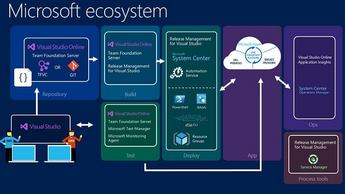










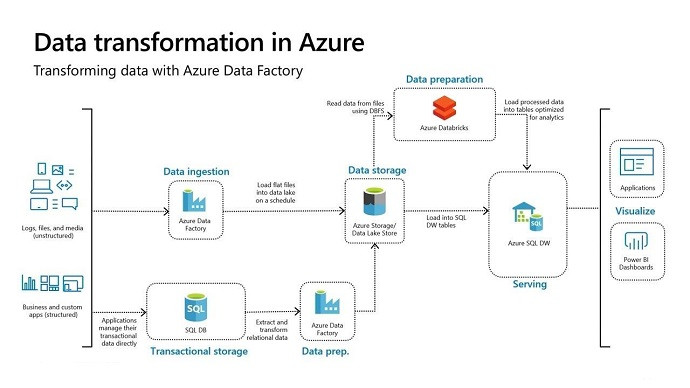









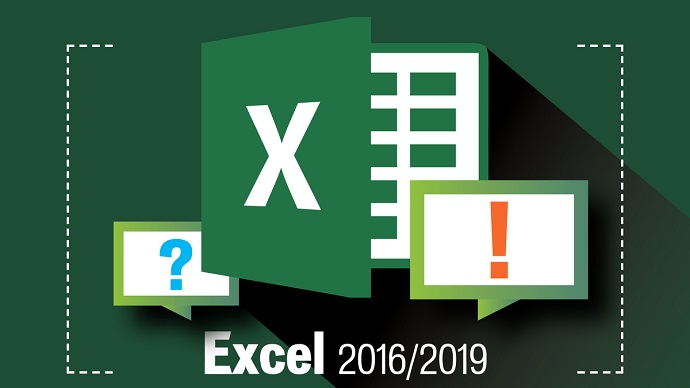





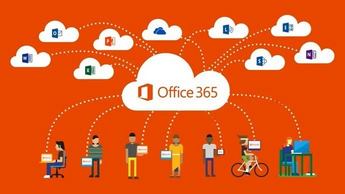
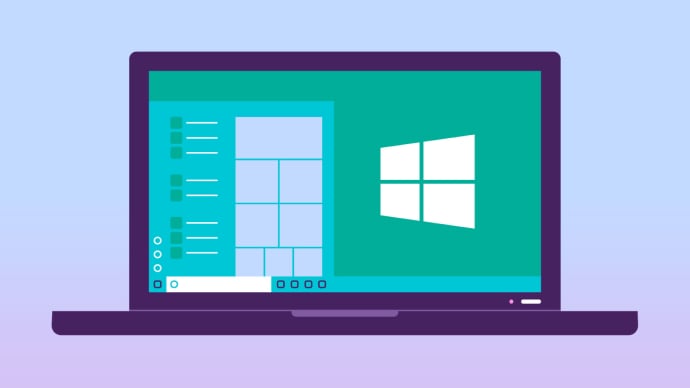









Only Registered Members can View Training Courses
Please fill out your email address below in order to view Training Courses. Registration is Free and Easy, You Simply need to provide an email address.
- Trusted by 1.2M IT Certification Candidates Every Month
- Hundreds Hours of Videos
- Instant download After Registration






